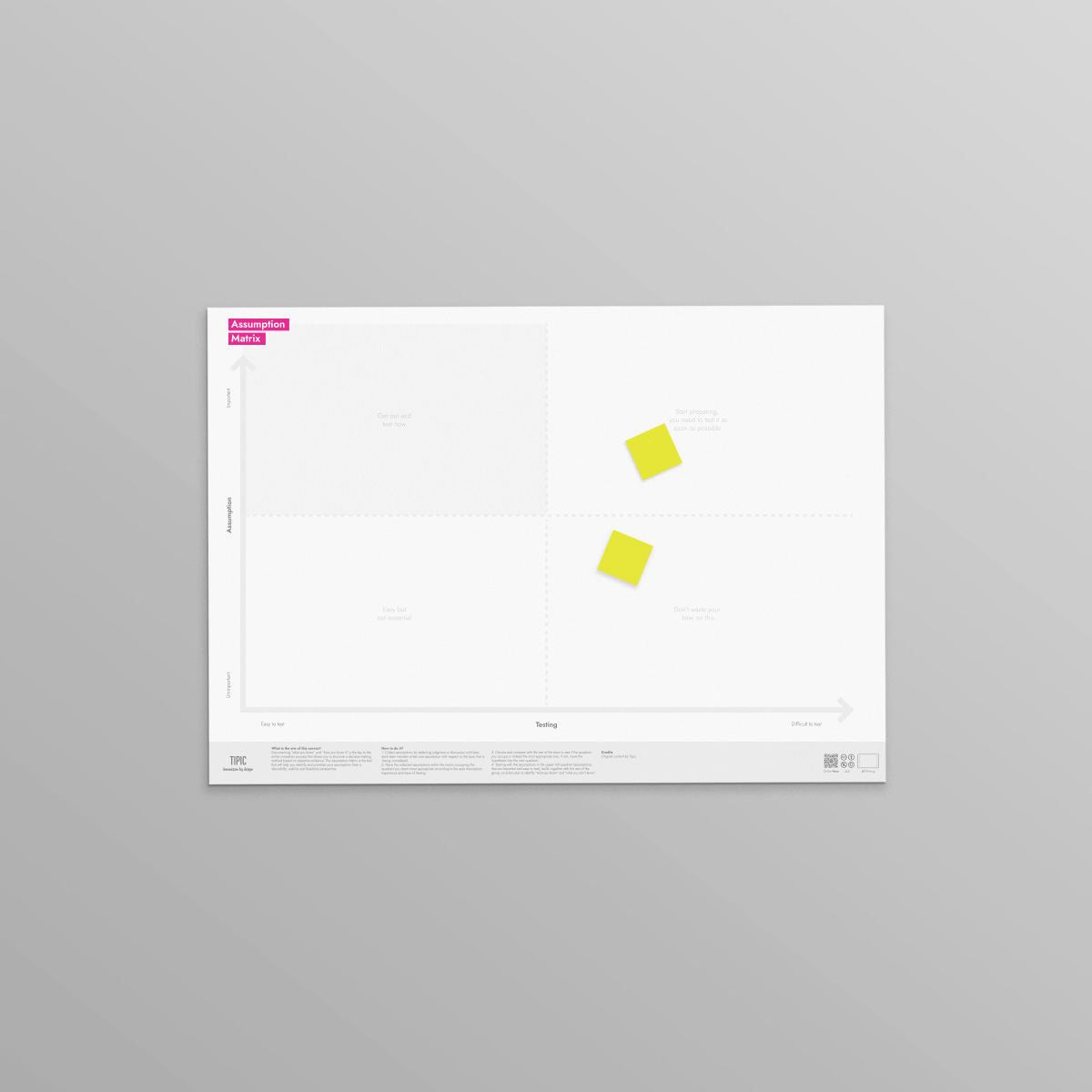
Identify "what is known" and "what is not known"
Documenting "what you know" and "how you know it" is the key to the entire innovation process that allows you to structure a decision-making method based on objective evidence. The Assumption Matrix is the tool that will help you identify and prioritize your assumptions from a desirability, viability and feasibility perspective.
What do I really know? What, on the other hand, do I think I know?
How to use the Assumption Matrix
1. First Step
Collect assumptions by postponing judgment or discussion until later; each team member writes an assumption with regard to the topic under consideration.
2. Second Step
Place the collected assumptions within the matrix occupying the quadrantyou consider most appropriate according to the axes Assumption Importance and Ease of Testing.
3. Third Step
Discuss and compare with the rest of the team to see if the occupied quadrant is indeed the most appropriate one; if not, move the hypothesis to the new square.
4. Fourth Step
Starting with the assumptions in the upper left quadrant (assumptions that are important and easy to test), build, together with the rest of the group, an action plan to identify "what you know" and "what you don't know".


